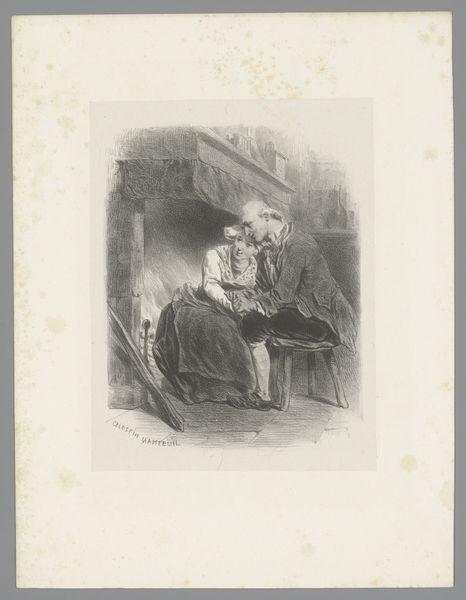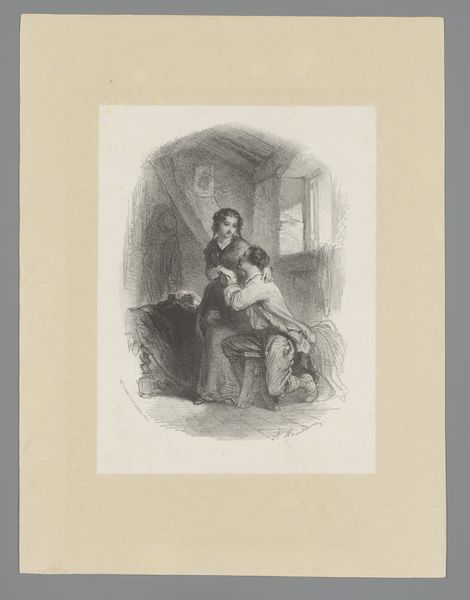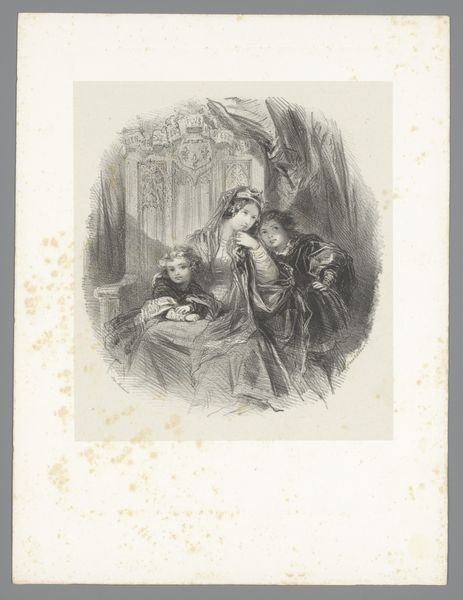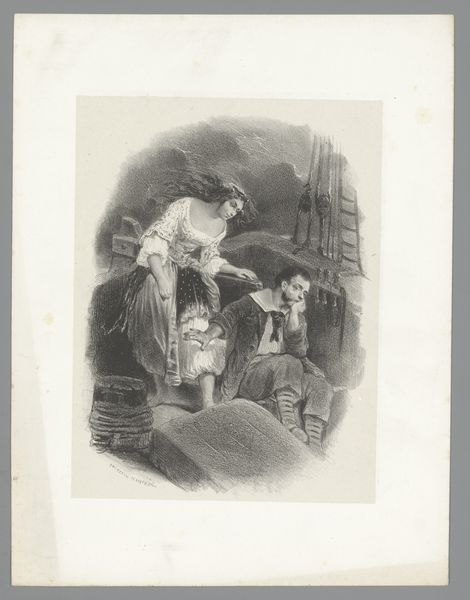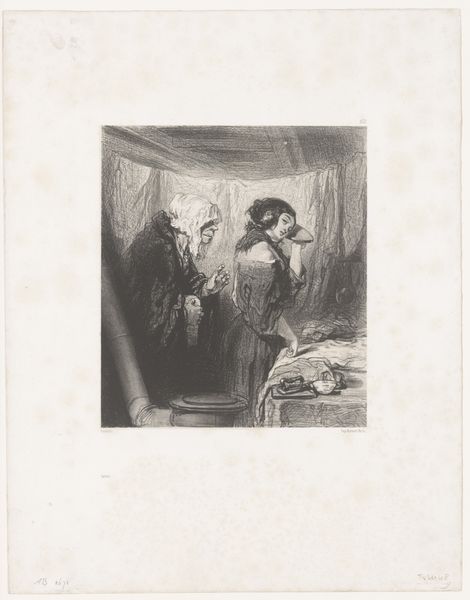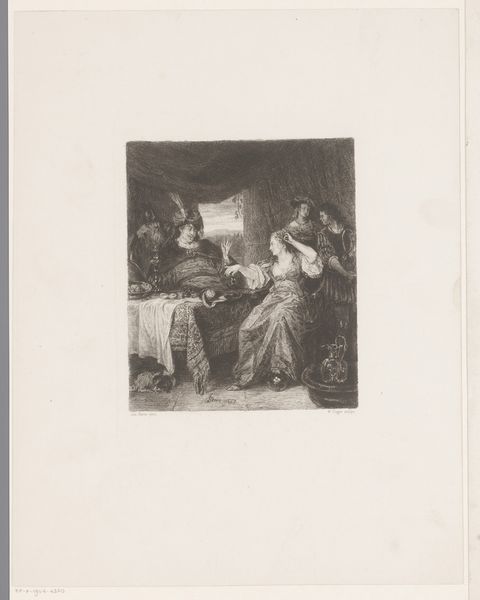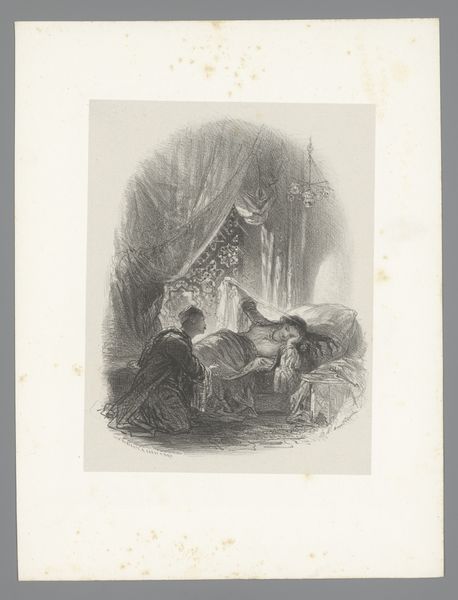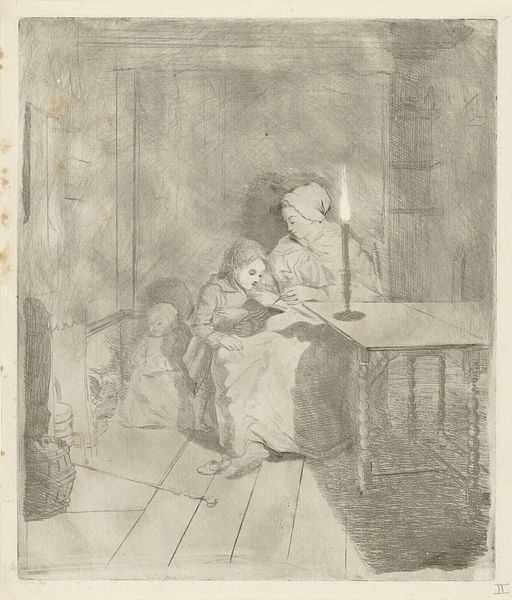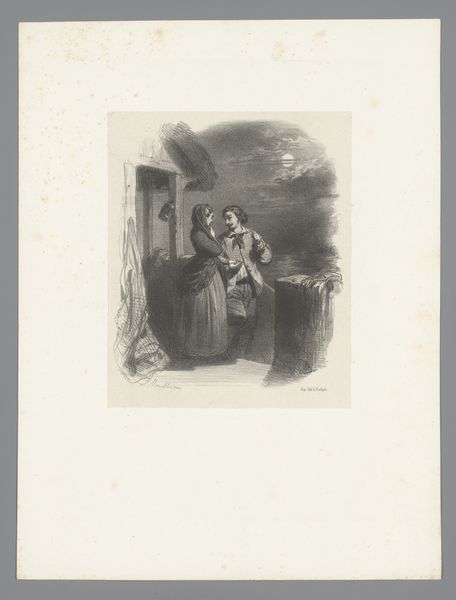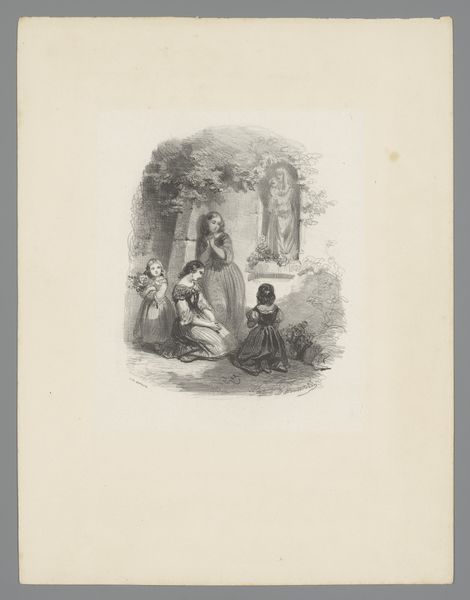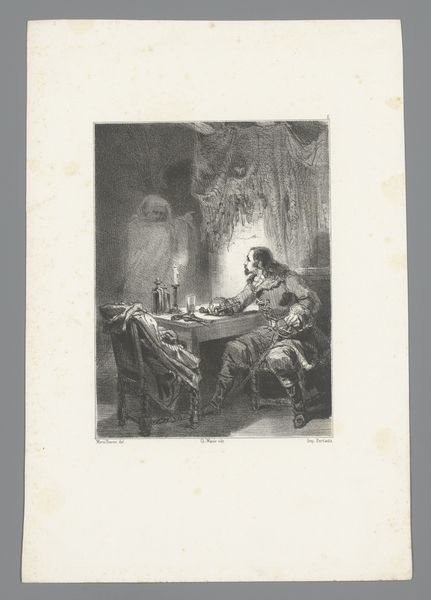
drawing, pencil
#
portrait
#
pencil drawn
#
drawing
#
narrative-art
#
pencil sketch
#
figuration
#
romanticism
#
pencil
#
genre-painting
Dimensions: height 359 mm, width 276 mm
Copyright: Rijks Museum: Open Domain
Editor: So, here we have "Man en vrouw zitend bij kind in bed," or "Man and Woman Sitting by Child in Bed," a pencil drawing made sometime between 1823 and 1873 by Célestin Nanteuil. It has a definite sentimental feeling. What kind of narrative do you think Nanteuil is trying to convey, and how does it fit within the context of art at that time? Curator: Well, considering this piece was produced during the Romanticism movement, its sentimentality is hardly accidental. Genre paintings like this gained popularity as ways to express moral or social values accessible to a wider public. Nanteuil uses the intimacy of the family, centered on a sick child, to perhaps evoke compassion and concern. Does the modest setting give you any indication about the values represented here? Editor: Definitely. The simplicity suggests that genuine feeling isn’t dependent on wealth or status. Is it common for artists of that era to choose domestic scenes to convey such sentiments? Curator: It’s quite common. The rise of the bourgeoisie brought with it a fascination with domestic life. But beyond just representation, consider how this image might *shape* societal expectations around family roles, women's duties as caregivers, or the sanctity of childhood during times of higher infant mortality. Think of how these images might serve as silent lessons. Do you find this composition emotionally manipulative, or simply representative of its time? Editor: I see what you mean about 'silent lessons.' It could easily be viewed as sentimental, maybe even a little manipulative to tug at heartstrings, but you’re right, that says more about my 21st-century perspective. Thank you! Curator: And thank you for your astute observations. This kind of exchange really brings the historical context to life, doesn't it?
Comments
No comments
Be the first to comment and join the conversation on the ultimate creative platform.
